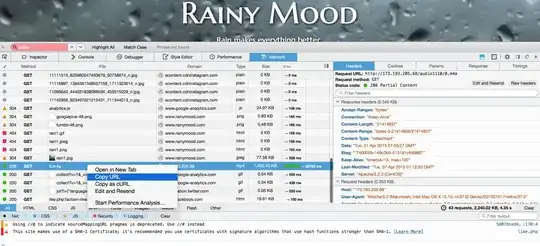When you create a website and you embed images, videos, audio, javascript or other external sources, you specify their location by an own URL too.
For example you have this directory structure on your server, which resolves to the following accessible URLs (asuming your website is www.example.com):
|-- /index.html -> www.example.com/index.html
|-- /images/ -> www.example.com/images/
| |-- /banner.png -> www.example.com/images/banner.png
| +-- /icons/ -> www.example.com/icons/
| +-- favicon.png -> www.example.com/icons/favicon.png
+-- /audio/ -> www.example.com/audio/
|-- intro.mp3 -> www.example.com/audio/intro.mp3
+-- voice.flac -> www.example.com/audio/voice.flac
When you access index.html your browser will look for all the other embedded URLs and will get them from the server too. You can use tools like Firebug for Firefox or the Chrome Developer Console to capture the requests. One of those requests should be the URL to the media file.
If you have an HTML <embed> tag (or a <img> tag), the URL to that media is specified by the src attribute, which can be also examined with tools like Firebug or the Chrome Developer Console. You can make a rightclick->Inspect Element anywhere on the page and examine the HTML.
<embed src="/audio/intro.mp3"> -> www.example.com/audio/intro.mp3


